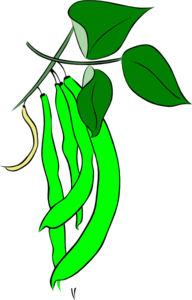
Investigation: Where do Plants Get Their Food?
At one time, it was believed that plants got their nutrients and food directly from the soil. Some scientists became skeptical of this and proposed an alternate method by which plants get the food necessary to grow. They thought that plants used sunlight to create the food needed for life processes. Everyone laughed at such a silly idea. How could the sun give anything food? These scientists were convinced, but they had to first disprove that present idea that the plant's food came from the soil. They would have to design an experiment to show that the soil was not actually "consumed" by the plant as it grows. Experiments were based on the idea that if the plant was actually consuming the soil as part of its diet, then the amount of soil in a potted plant would decrease over time as the plant grows.
Consult with your lab partner to design an experiment that will disprove the idea that plants obtain their food from the soil. You will have the following materials available to you to conduct your experiment.
4 bean seedlings (bean seeds just beginning to sprout), any seeds can be substituted
2 cups or plant containers
Soil of any type, a variety of soil types may be available
Balance or Scale / Rulers to measure plants
***Your final observations and lab will be turned in separately, use the following guideline.***
TITLE
A. Introduction
Include your prelab observations, information on equipment used (types of seeds). This is where your hypothesis is written. The hypothesis should be written as an "if..then" statement that attempts to answer the question about whether plants actually consume soil as they grow.
B. Experimental Design
Describe your experiment. Make sure your design can answer the following questions:
How will you tell if the plant(s) have actually consumed the soil?
Do you have a control? What is the purpose of the control?
C. Results
Record data over the period of time you observed your plants. Data may include observations of the plant's growth as well as measurements of soil and plant weight, or height of the plant. Good scientists record data very carefully and often organize information into charts and graphs.
D. Conclusions
Here is where you actually answer the question: Did the plants consume the soil? Use your data to support your statements. Remember to write in complete sentences. For example, you would say "plants do /do not consume soil ..... I know this because... ". Do not recopy your entire data here, but do use observations and data to support your final answer to the question.
Other Resources on Plants
Rate of Photosynthesis – using baking soda, elodea and light, measure the bubbles to observe how fast a plant photosynthesizes and releases oxygen
What Factors Affect Seed Germination – grow seedlings with different conditions (light, water, temperature)
Algae Beads and Photosynthesis – use algae cultures and sodium alginate, measure photosynthesis by changes in color of indicator
Separation of Plant Pigments – identify plant pigments by separation and isolation of the pigments using thin layer paper chromatography.